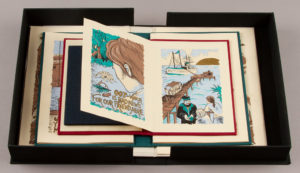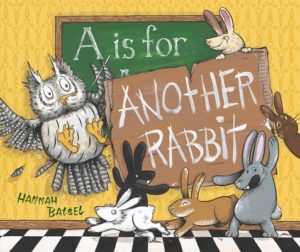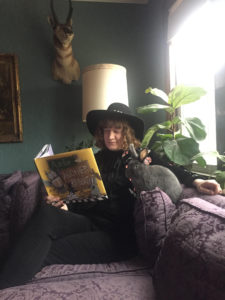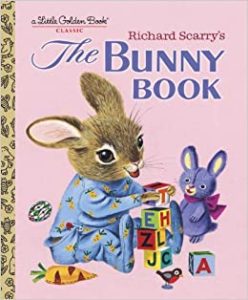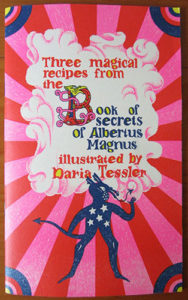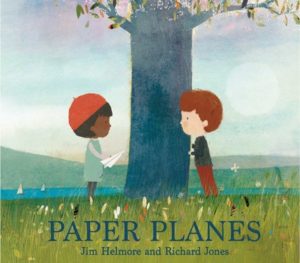 I had genuine worry that the COVID-19 situation would understandably keep the OPB blog from continuing with the every-Monday posts we’ve managed since we launched in April 2018. I’m incredibly stoked that we’re able to keep on trucking thanks to the generosity of literary agent Jennifer Unter who agreed to be this month’s Industry Insider Interviewee. What luck!
I had genuine worry that the COVID-19 situation would understandably keep the OPB blog from continuing with the every-Monday posts we’ve managed since we launched in April 2018. I’m incredibly stoked that we’re able to keep on trucking thanks to the generosity of literary agent Jennifer Unter who agreed to be this month’s Industry Insider Interviewee. What luck!
Here are three things you need to know about Jennifer before we get rolling.
- She has her own literary agency.
- She has her own literary agency.
- She has her own literary agency.
Let’s be clear about something. Jennifer has plenty of other selling points that make her an agent any writer would be ecstatic to partner with, but here’s what I’ve come to realize over the years—if you can launch your own agency and keep it up for more than a decade, you’re doing not just one thing but a BUNCH of things well. Let’s find out what those are!
Agency Website: www.theunteragency.com
Twitter: https://twitter.com/JenniferUnter
RVC: There’s no way to interview anyone right now without asking this question—how has the COVID-19 virus affected your work?
JU: It’s so hard to tell at this point. In the present moment, many editors are asking me to re-pitch them with projects in June since they’re so overwhelmed with working from home (with kids and other issues) that they aren’t buying anything. A few of my books have been pushed back to 2021, but some are going forward as planned, so we’ll see how that works. I’ve been trying to support my authors whose books are out now with new ways to publicize–online storytime and the like. Publishing is a real community, so everyone is trying to help everyone else out and we’re all just getting used to the new (temporary) normal.
RVC: Thanks for that honest update. I get a lot of questions from students, colleagues, and writing friends about what’s going on in the writing world. We’re all sort of holding out collective breath.
JU: Holding our breath and taking very deep breaths at the same time, if that’s possible!
RVC: Exactly so! Let’s circle back to the beginning. At what point did you know you were going to work in the writing world?
JU: I knew when I was in college that I wanted to work with writing in some way. I was an English major and my favorite thing was to read books, so I figured that working in publishing would be an extension of that!
RVC: How did you land that first editorial job at Henry Holt & Co.? And what was the most valuable lesson you took from that experience?
JU: I went to the publishing course at NYU the summer after I graduated college and the editorial assistant job at Henry Holt was on the job board, so I applied and, luckily, I got it. My boss, Allen Peacock, was a brilliant editor, and he taught me to trust my instincts and to have passion for every project. Every book is at least 2 years of work and if you don’t completely love it from the get go, you’re going to fall out of love pretty quickly when you have to read it for the 4th time.
RVC: While you’re not a copyright lawyer, you did attend Fordham University School of Law, and you spent some years at an entertainment firm, so I’m guessing you have better-than-average insight into this. What’s the most common misconception that writers (and maybe some agents and editors) have about contracts in general, and/or copyright?
JU: Many people believe that contracts are ironclad or can’t be negotiated, but that’s not the case. In addition, contracts can be difficult to read or make sense of–that’s what I focused on as a transactional entertainment attorney. After reading many hundreds, they become much clearer!
RVC: Is there one part of them that most early-career authors don’t appreciate or think though? I guess I’m thinking about what a genius move George Lucas made way back when to keep the merchandising rights (and sequel rights!) to the Star Wars franchise. Any recommendations for contract parts to read with extra-care and attention?
JU: Definitely the competition clause. A contract should never prohibit a writer from doing their job, which is being a writer! A contract that doesn’t allow a writer to publish other things–whether it’s another book, an article, or anything that isn’t very similar to the work that is the subject of the contract–is going overboard and should be negotiated so that it’s fair to the writer.
RVC: Great advice there for sure! Now let’s talk about the decision to create The Unter Agency, LLC in 2008.
JU: I knew I wanted to work for myself for a long time, but it’s hard to find the right moment. I had two young kids at home, and I wanted to do something that was for me. I felt like if I didn’t go for it then, I was never going to do it.
RVC: What was your first sale?
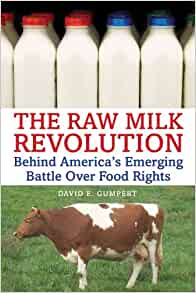 JU: David Gumpert’s Raw Milk Revolution to Chelsea Green Publishing.
JU: David Gumpert’s Raw Milk Revolution to Chelsea Green Publishing.
RVC: Unlike some kidlit agents, you also represent a host of other areas—food/cooking, nature/environment, biography/memoir, pop culture, travel/adventure, true crime, politics, and health/fitness. What percentage of the books your rep are kidlit in general? And picture books in specific?
JU: I would say that 60–70% of my list is kidlit. And out of that 60%, probably ½ is picture books.
RVC: What do you like most about picture books?
JU: I love the whimsy and the truth of picture books. They are our emotions, distilled down to 32 pages.
RVC: What picture book project at your agency—at whatever stage it’s in—are you most excited about?
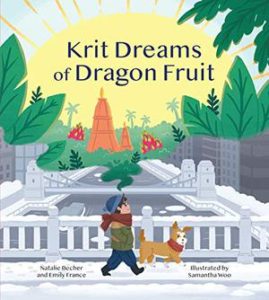 JU: That is not really a fair question, since I love them all! But, I think for this current moment, a picture book that just came out entitled Krit Dreams of Dragon Fruit by Emily France and Natalie Becher–which is about weathering change–is perfect for kids right now.
JU: That is not really a fair question, since I love them all! But, I think for this current moment, a picture book that just came out entitled Krit Dreams of Dragon Fruit by Emily France and Natalie Becher–which is about weathering change–is perfect for kids right now.
RVC: Okay, it’s time for another installment of the World’s Greatest Picture Book Blog Speed Round™(ish)! Jennifer, are you ready?
JU: Ready, willing, and able!
RVC: Since your agency’s office is a half-block from Central Park…“The strangest thing I’ve seen at Central Park was…”
JU: A clown with a pet snake.
RVC: Best-yet-somehow-underappreciated indie bookstore in NYC?
JU: I think because there are so few of them, no bookstores in NYC feel underappreciated, but my favorite at the moment is The Corner Bookstore on the Upper East Side.
RVC: If picture books were comfort food, what would they be?
JU: Eggplant lasagna.
RVC: Top attributes of your top clients?
JU: Their dedication to their craft and their desire to bring joy to their readers.
 RVC: Best non-Unter-repped picture book of 2019?
RVC: Best non-Unter-repped picture book of 2019?
JU: Magic Ramen by Andrea Wang.
RVC: What’s the secret sauce of YOUR success?
JU: I work all the time! And, I love what I do.
RVC: Thanks so much, Jennifer!

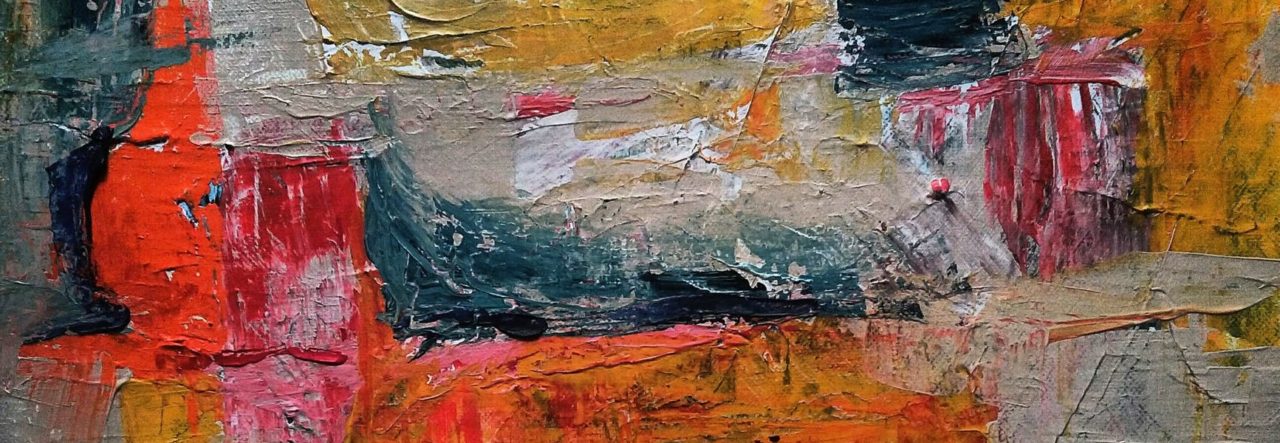
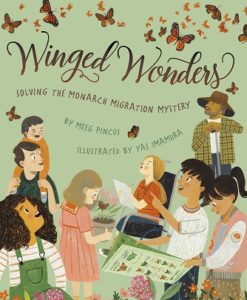
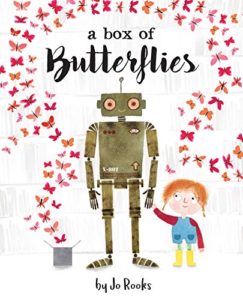
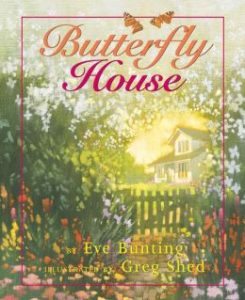
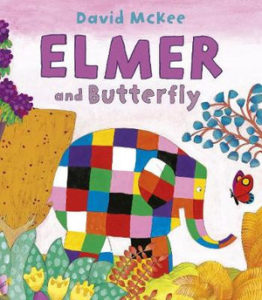
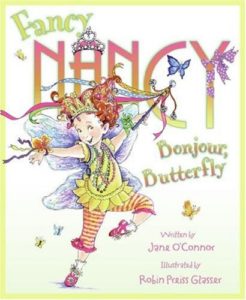
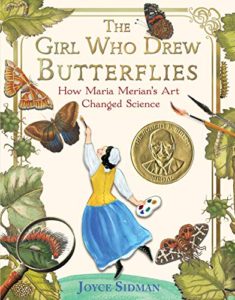
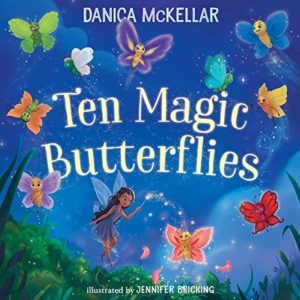
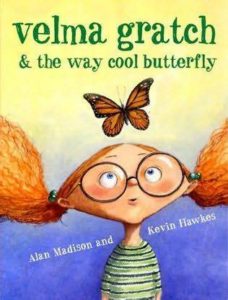
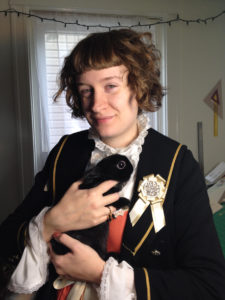 It’s always a treat to witness the beginning of a picture-book career, and that’s what’s happening with the author/illustrator we’re interviewing this month—Chicago artist Hannah Batsel, whose debut,
It’s always a treat to witness the beginning of a picture-book career, and that’s what’s happening with the author/illustrator we’re interviewing this month—Chicago artist Hannah Batsel, whose debut, 